Shoulder pain can be one of the most complex presentations a therapist will see. It can be difficult to understand, frustratingly slow to improve and limit the patient’s quality of life considerably. If you find shoulder impingement treatment tricky then this is the course for you.
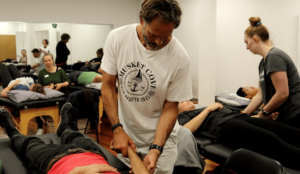 Shoulder complaints are the third most common musculoskeletal cause of visitation to a general practitioner[1] with at least half of these persisting beyond 12 months[2]. Shoulder Impingement Syndrome (SIS) is the most common cause of shoulder pain[3] and a recent systematic review of interventional treatment for Shoulder Impingement Syndrome concluded the effectiveness of surgical or conservative therapies targeting the shoulder joint are limited.[4]
Shoulder complaints are the third most common musculoskeletal cause of visitation to a general practitioner[1] with at least half of these persisting beyond 12 months[2]. Shoulder Impingement Syndrome (SIS) is the most common cause of shoulder pain[3] and a recent systematic review of interventional treatment for Shoulder Impingement Syndrome concluded the effectiveness of surgical or conservative therapies targeting the shoulder joint are limited.[4]
Don Hunter completed his PhD (University of Newcastle) in 2022, providing evidence that a relationship between thoracic posture and shoulder impingement syndrome (SIS) exists. Using a randomised control trial he established an evidence-based clinical approach to treating SIS using simple osteopathic techniques. In addition, as part of his PhD, Don provided an anatomical model describing why SIS occurs, which lends itself to the treatment of other limb conditions as well.
Shoulder Impingement: A Postural Model will review the normal anatomy and function of the shoulder complex, the pathophysiology of SIS, the most common differential diagnoses of SIS and their key clinical signs and symptoms, and evidence-based clinical testing for SIS. Don will describe why thoracic posture is so important in addressing SIS and provide an anatomical model, from his PhD, that provides an explanation for the occurrence of SIS. Using this model Don will provide a treatment framework for SIS as well as other wrist, elbow, upper limb and tendonitis conditions (such as tennis elbow).
Shoulder Impingement: A Postural Model is suitable for Osteopathy, Physiotherapy and Chiropractic practitioners. There will be a strong emphasis on practical sessions that you will be able to use with confidence in your practice immediately.
The course will run from 8:30AM to 4:00PM. Places are limited to 20 attendees. It also includes morning and afternoon tea, printed notes and an e-certificate of attendance for your CPD records.
The course can be counted as 6.5 hours CPD.
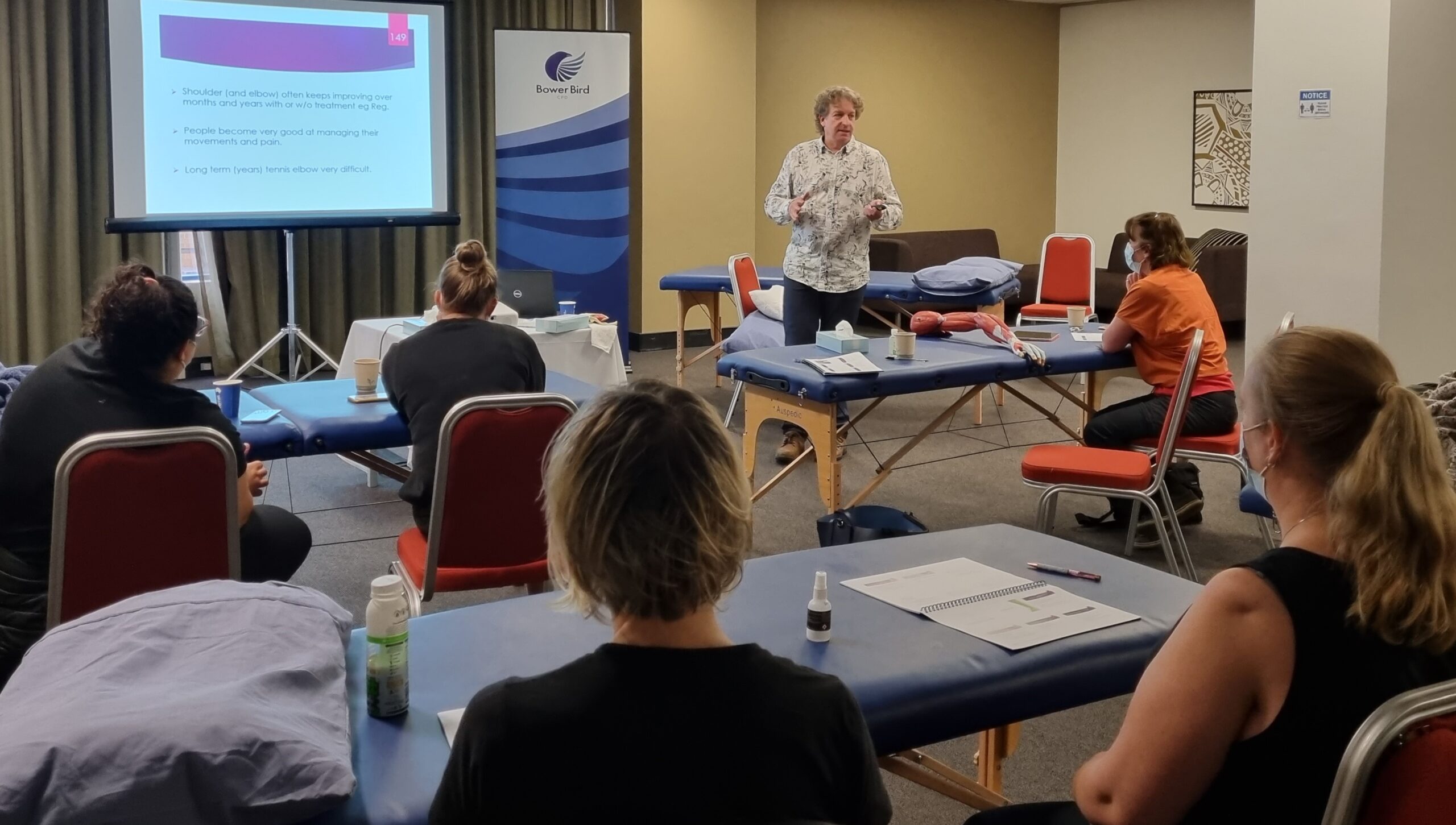
I have always found shoulders a little bewildering. Treatments have been hit and miss over the years. This course gives me a good evidence based foundation in relation to shoulder pathology, specifically impingement. And we learned how to treat! Most excellent day.
Felicity Marguin
Loved it! One of the best courses I’ve been to. Really useable information and relatable to practice. Good spacing with breaks and amount of theory and prac. Don was great at presenting - engaging and observant of the audience.
Great case studies, good class size, everything was well organised. Wouldn’t change anything.
Heather
Don did a great job in presenting all the information with character, he had some jokes in there and you could tell he had a-lot of passion for shoulders. It made it very easy to follow along with all the information and data/statistics that would otherwise be dry.
I really, really liked all the graphs. They helped give us a visual to accompany all the information that was given to us, the images of the cadavers were also really great and helped us visually see the relationship of fascia with other anatomical structures in the shoulder especially the triceps.
The practical component was really great. It helped that it was a smaller class and we had a good amount of one on one
Don had a lot of great case study examples which helped put the theory into practice. He helped us understand that ideally not everything is textbook and gave us some examples of tricky shoulder presentations.
ANON
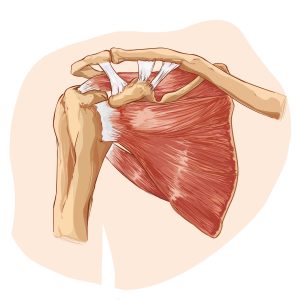
[1] Greving K, Dorrestijn O, Winters JC, et al. Incidence, prevalence, and consultation rates of shoulder complaints in general practice. Scandinavian Journal of Rheumatology. 2012;41(2):150-155.
[2] Van der Heijden GJMG. Shoulder disorders: a state-of-the-art review. Bailliere's Clinical Rheumatology. 1999;13(2):287-309.
[3] Mayerhoefer ME, Breitenseher MJ, Wurnig C, Roposch A. Shoulder impingement: relationship of clinical symptoms and imaging criteria. Clinical Journal of Sport Medicine. 2009;19(2):83-89.
[4] Saltychev M, Aarima V, Virolainen P, Laimi K. Conservative treatment or surgery for shoulder impingement: systematic review and meta-analysis. Disability & Rehabilitation. 2015;37(1):1-8.
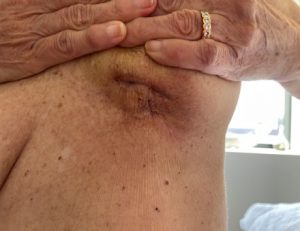 1 in 8 women in Australia will be diagnosed with breast cancer in their lifetime. Thankfully the 5-year survival rate is over 90%, however as they try to move forward with their lives, they continue to deal with the long-term side effects of their treatment journey.
1 in 8 women in Australia will be diagnosed with breast cancer in their lifetime. Thankfully the 5-year survival rate is over 90%, however as they try to move forward with their lives, they continue to deal with the long-term side effects of their treatment journey.
This treatment commonly results in significant scarring, adhesions, fibrous tissue, hard and lumpy breasts, rippled or contracted breast implants and even chronic pain. Current management is focused on exercise prescription or self-massage advice leaving a significant gap in the post-treatment care of breast cancer patients which osteopathy is well placed to help fill.
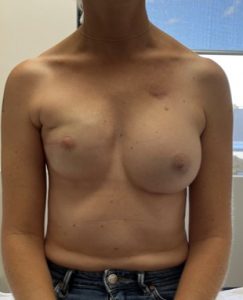
This one-day course will expand your understanding of breast cancer classification, diagnosis and treatments. You will gain an understanding of how common side effects develop based on the current research, and how to apply an osteopathic approach to help provide relief.
Course participants will leave with an understanding of the different types of breast cancer, the medical treatment these patients undertake and the impact of each of these forms of treatment on the tissues of the body. The course will explain the primary side effects these women experience and provide an osteopathic approach to caring for them during their recovery.
After Breast Cancer has a strong practical focus including treatment protocols that you can use to make a significant impact on your patients’ lives by relieving discomfort, changing distorted breasts to look and feel ‘normal’, and allowing patients to feel comfortable in their bodies again. Many of the techniques learned can be applied to any form of post-traumatic or post-surgical scar.
Theory Component
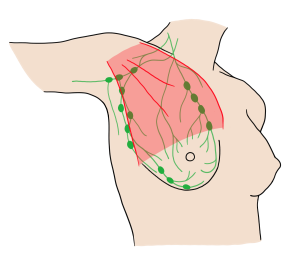
Practical Component
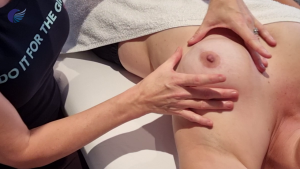
This course is open to osteopaths of all genders.
Participants will be required to expose breast tissue to practice on each other. Breast techniques will be undertaken only with consent and with all due sensitivity. Where possible direct palpation will occur underneath draping to protect the modesty of our participants so please bring a thin, cotton singlet for this purpose as bras will need to be removed.
The course will run from 8:30AM to 4:30PM with around an 1 hour of pre-learning videos. Places are limited to 18 attendees. It also includes morning and afternoon tea and an e-certificate of attendance for your CPD records. The course can be counted as 8 hours CPD.
Amanda Hannaford is an experienced osteopath who works exclusively with breast cancer patients. She currently practices as part of the interdisciplinary team at the Northern Beaches Breast Clinic, the Mater Hospital’s Centre For Wellbeing and is the founder and director of Restore Health & Wellness in St Leonards, Sydney.
Amanda’s patients are referred by Oncology Breast Surgeons, Radiation Oncologists, Medical Oncologists and McGrath Breast Care Nurses. She is enthusiastic about the future of osteopathy in this field and has developed her After Breast Cancer CPD course to encourage other osteopaths to feel comfortable to care for these patients in their own practices.
Amanda has been practicing in Sydney for 20 years and has been an osteopathic university lecturer and a registration board examiner.
Find out more about Amanda Hannaford’s experience here.
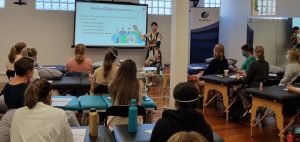
The way I've been describing it to people is, ‘sometimes you do a course and it might be good, but a bit watery. This course was juicy’!!
Amanda is such a genuinely engaging and inspiring teacher. She is warm and fun and has the life experience to back it up. I would recommend this course to anyone thinking of doing it!! I'm so excited to start helping women post breast cancer!
Roz Hill
As an osteopath and someone with a lived experience of breast cancer, I am so pleased that this course was created. I think osteopaths/manual therapists have so much to offer these patients. I highly recommend this course to anyone interested in working with patients with a history of breast cancer.
Reena Murray
Loved it all! It was very useful to have the pre-learning set up as you've done it. The face to face was great and Amanda was an excellent presenter. I felt very comfortable with all the hands-on learning; thank you for creating a safe, supportive and welcoming space of learning. And the handbook is an amazing resource. Thank you so much.
Narelle Crabbe
Amanda was so great in providing a good depth of knowledge and demonstrating the immense growth she has achieved in this field. What an asset to osteopathy! I also appreciated learning about referral ideas and things doctors/GP's in this field appreciate seeing in letters to build a good referral source. As someone who has completed several women's health osteopathy courses in Australia and the UK, this course really provided entirely knew knowledge to me.
Sarah
Amanda is a fantastic presenter! The course content was excellent with a great mix of practical techniques, to go along with the theory. For practitioners concerned about never providing Breast Cancer after-care to their patients, the techniques here are just as relevant to any patient undergoing wound healing post-surgery or trauma. The information I gleaned from Amanda enabled me to more deeply connect with several of my patients, who I usually treat for musculoskeletal complaints, and who have had breast cancer, and this greatly enhanced the rapport and trust that I have with them. These patients were elated and appreciative of my greater understanding of their journey. As the only male practitioner at the course I would like to thank Amanda and the rest of the course participants for being so inclusive and welcoming of me being there.
To say the material covered in this course is groundbreaking anywhere, let alone in our osteopathic practices, is a major understatement!!!
Tomas Leszczynski
Loved the presenter she was engaging, personal and professionally knowledgeable - a tricky balance to strike. Really helped to discuss and explore anatomy I have pondered in clinic. Well facilitated and clinically-relevant.
Ruth Atkinson
Amanda's course is very helpful in putting a protocol together for patients recovering post breast cancer treatment as there is a gap and a lack of understanding currently in both the medical industry and also the patients are not provided with supportive information towards their healing. I walked away from this course with better understanding regarding the type of cancers, the possible treatment protocols they receive and how we as osteopaths can assist these patients in their recovery. Thank you Amanda
Ilona Wagner
I loved the presenter, the topic, the approach, and techniques. I was able to take the techniques straight back to clinic and everything she described was what I felt and how the consult proceeded. From the patient crying and the location and feel of the scarring to the change in the tissues and her tummy rumbling.
Amanda Viedma-Dodd
Loved the topic. Amanda was a great presenter and it was a real pleasure to learn from her and learn more about her work and her unique perspective on osteopathy and breast cancer care.
I felt really inspired.
Kate Henderson
I loved everything about it. It was very informative and easy to comprehend and follow along with. Everything felt relevant and was presented in an enjoyable way. I left feeling like I knew so much more than I did before the course and like I could implement a lot of what I learnt straight away.
Chloe
The course was fantastic. Amanda has done a beautiful job in collating relevant information and giving a well rounded approach to breast care. She was so generous with her resources, her experience and equipping us with skills to be able to make a difference for breast cancer and breast augmentation patients.
Chrissy Weston
Endometriosis is a whole body issue, affecting the nervous, immune, endocrine, lymphatic and musculoskeletal systems. A growing body of research is exploring the interconnectedness of all these systems. But how do you apply that knowledge to your patients?
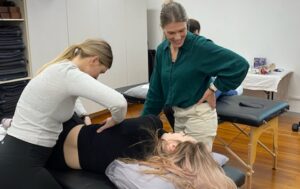
The Endo Enigma takes a cutting edge understanding of endometriosis, inflammation and pain science and combines them with traditional osteopathic principles and philosophy to develop a clinical reasoning framework you can easily apply to people with endometriosis and persistent pelvic pain in your clinical practice.
In this one-day course participants will gain an understanding of what endometriosis REALLY is - debunking many current myths. You will learn an individualised assessment and treatment plan for patients with suspected or diagnosed endo and how it fits within the context of an interdisciplinary team.
Treating endometriosis requires a number of skills; including hands-on manual therapy, pain education and lifestyle management. You will learn a variety of external manual techniques for pelvic pain that can be used together as a model or individually. The course includes a nutrition component, and a variety of tips to assist with whole person management of this complex issue.
The Endo Enigma is full of practical information you can immediately implement to improve how you work treating endometriosis.
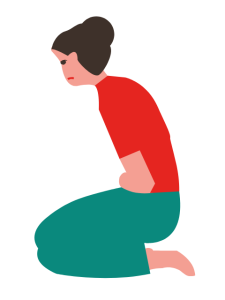
The Endo Enigma course is applicable to all allied health manual therapy practitioners. You’ll leave with a framework for developing an assessment and treatment plan for patients with suspected or diagnosed endometriosis. Internal techniques will not be demonstrated.
Includes access to around 3 hours of pre-learning videos will cover anatomy and other background topics. On the day the course will run from 8:30AM to 4PM. Places are limited to 20 attendees. It also includes morning and afternoon tea and an e-certificate of attendance for your CPD records. The course can be counted as 9 hours CPD.
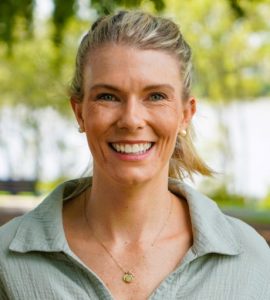
Rebecca Malon is based on the Sunshine Coast and has been practicing as an Osteopath since 2011. Her clinic, Freya Health primarily focuses on pelvic health in particular pelvic pain, pelvic floor care, preconception, pregnancy and postpartum.
She graduated RMIT with a Masters Degree in Osteopathy in 2010 and completed her Bachelor of Health Science (Nutritional and Dietetic Medicine) in 2019.
In addition to her clinical role Rebecca is the Queensland practitioner member for the Osteopathy Board of Australia and was previously a lecturer and Curriculum Facilitator in the Myotherapy Department at Endeavour College of Natural Health.
See Rebecca’s full bio here.
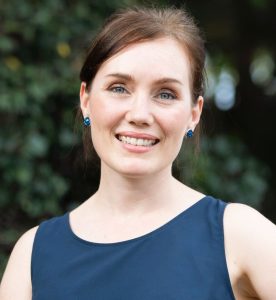 Sarah Dryburgh is based in Brisbane and has been practicing since 2012. Early in her career she began working with patients with pelvic pain and endometriosis and has focused on increasing awareness of the role of allied health in managing endometriosis.
Sarah Dryburgh is based in Brisbane and has been practicing since 2012. Early in her career she began working with patients with pelvic pain and endometriosis and has focused on increasing awareness of the role of allied health in managing endometriosis.
In 2017 she completed her Fellowship in Lifestyle Medicine and joined the Australiasian Society of Lifestyle Medicine, which she uses to complement her osteopathic practice.
Sarah has presented on an osteopath’s role in managing endometriosis at various events including the New Zealand Osteopathic Conference and QENDO. Her latest contribution to OsteoLife magazine was in 2024 and focussed on endometriosis. She was the creator of the Women’s Health Symposium in Brisbane and strongly believes in multidisciplinary support for people with endometriosis.
See Sarah’s full bio here.
The presenters’ knowledge was impeccable and all the information was so valuable. The slides were great and contained just the right amount of info. It was well paced and I definitely came out feeling well-armed. Loved it
Well-presented pre-course anatomy review and content as well as great manual skills and nutrition taught on the day. As a physio the group of Osteo's were so welcoming and patient with our holes in clinical osteo knowledge!
Fascia is often the missing link for addressing persistent pain, pain after a fall or injury, immobilisation, recurrent acute back pain, movement restriction after surgery, post-surgical pain, contusion injuries, scar tissue and more.
There is a huge amount of current research to support how osteopaths work with the fascia in a holistic way to improve patient outcomes. This includes anatomical connections derived from embryology, neurovascular supply, connective tissue mechanics and mechanotransduction, interactions of the fascia with inflammation, cellular messengers, hormones and the immune system.
A thorough understanding of the physiology and pathophysiology of the fascial systems can help inform patient education, tailored movements and specific rehabilitation that is quite different to how we approach muscular dysfunction. Liz Howard has translated this research into a simple assessment and treatment model for local and global fascial dysfunction, to help select the best treatment techniques and self-management for your individual patient.
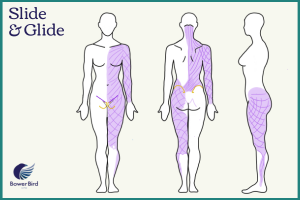
Learning Objectives
Related Learning
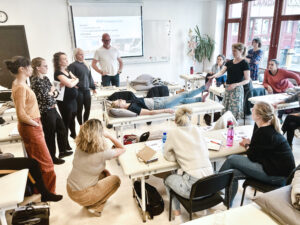
Attendees also have the opportunity to attend Liz Howard’s Exploring Visceral Fascia course which will look at the deeper chains in more detail, including viscero-fascial contributors to pain or dysfunction.
Course Details
The Myofascial Release course is applicable to all allied health manual therapy practitioners. It will include practical examination and treatment protocols you will be able to use with confidence in your practice.
The course will run from 8:30AM to 4PM. Places are limited to 20 attendees. It also includes morning and afternoon tea, e-notes and an e-certificate of attendance for your CPD records. The course can be counted as 6 hours CPD.
About the Presenter
Advanced Pain Management Osteopath Liz Howard practices at the Women's Health & Research Institute of Australia, a specialist pelvic pain clinic in Sydney. She holds a Master of Science in Medicine (Pain Management) from USYD in 2013 and has over 25 years’ of experience as an osteopath, including pain education and as a clinical specialist in sacral neuromodulation.
Liz has more than 16 years’ of experience teaching at Australian universities and as a CPD provider. Her teaching experience ranges from course writing, presenting lectures and practicum in Undergraduate and Master’s Osteopathic programs (University of Western Sydney, Southern Cross University), clinical supervision of Osteopathic students (UWS, SCU, SportsMed Mumbai), to presentations at many professional associations including RANZCOG (Royal Australian & New Zealand College of Obstetrics & Gynaecology), AGES (Australasian Gynaecological Endoscopy & Surgery), NSANZ (Neuromodulation Society of Australia and New Zealand), Osteopathy Australia National Conference presentation, Pregnancy Massage Australia, Pelvic Floor Seminars, GP education evenings and international allied health events, most recently in Ireland, Sweden and New Zealand.
Find out more about Liz Howard's experience here.